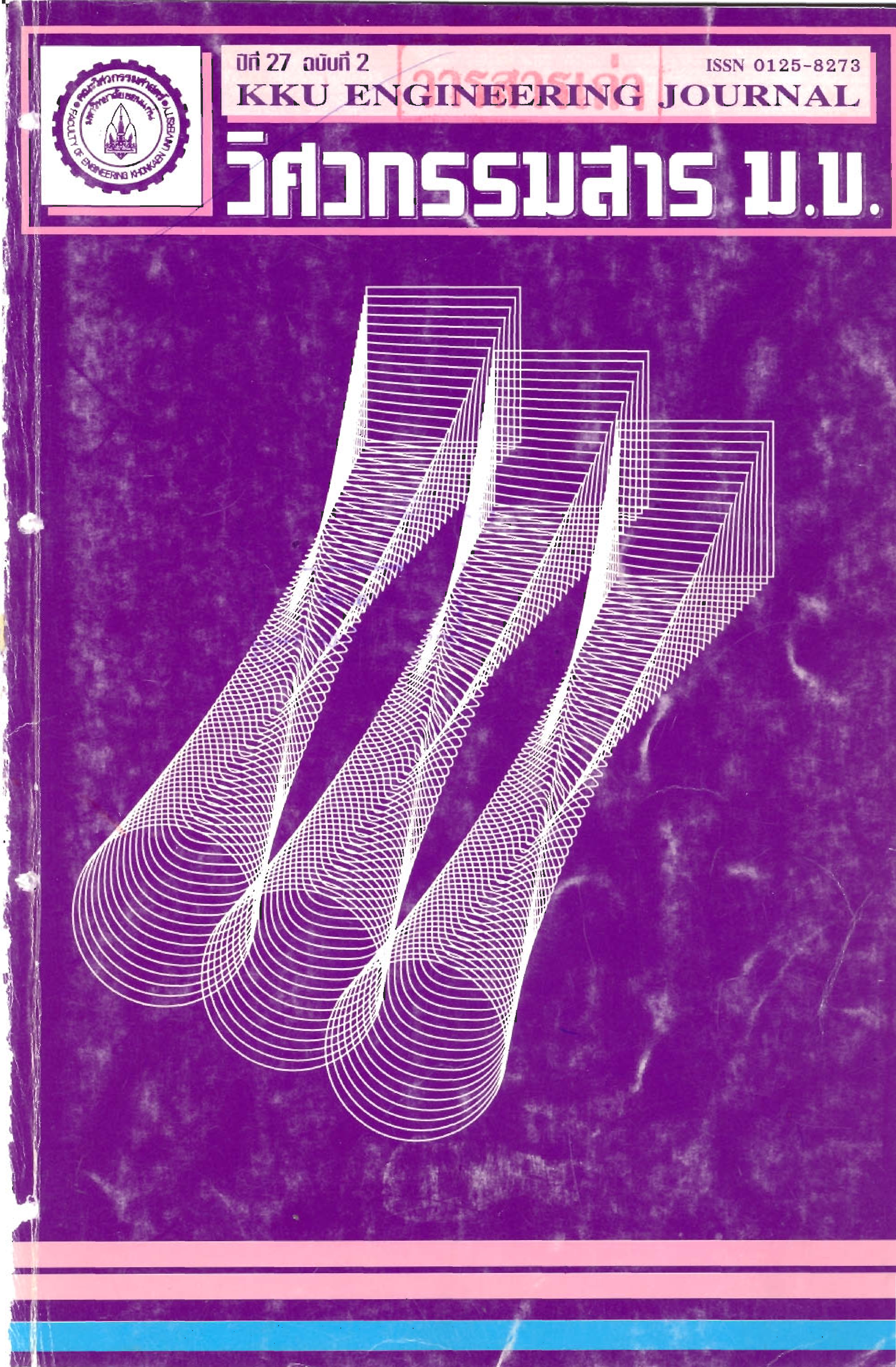Analysis of building Subjected to Earthquake Load Case Study of the Building on zone 1 and 2
Main Article Content
Abstract
This paper is a case study of the behavior of a 12-floor reinforced concrete building. The model building size is 24.7 meters square, 3 bays and 39.4 meters high. The first floor is 4.2 meters and each floor between second floor to twelfth floor are 3.2 meters high. In this paper, we considered lateral load due to earthquake and wind. For the earthquake analysis, the equivalent static load followed the 1985 Uniform Building Code (UBC 1985) is employed, while the 1979 Act of Legislation of Building Control is used for the wind load analysis. Vertical dead load and live load were not considered. Internal forces were analyzed by program STAAD-III. The results of the internal resistance forces; axial forces, shear and bending moments caused by a zone 1 earthquake are 1.24 to 10.8 times larger than the forces by wind load in columns. The external resistance forces caused by zone 1 earthquake are 1.83 and 2.07 larger than the forces caused by wind load for base shear and overturning moment respectively. All resistance forces caused by zone 2 earthquake are twice as large as the resistance forces caused by zone 1 earthquake.
Article Details
This work is licensed under a Creative Commons Attribution-NonCommercial-NoDerivatives 4.0 International License.



